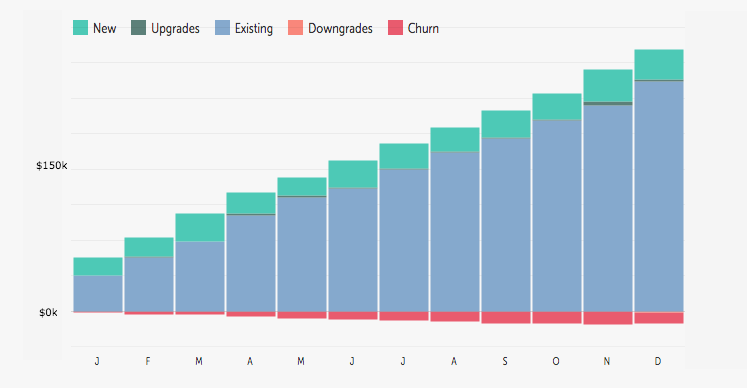Startups face unique challenges in marketing. Traditional marketing methods often take too long to show results, lack flexibility, and can be costly—three things that most startups cannot afford. As companies in the early stages grow, they require marketing strategies that deliver results quickly, adapt to evolving markets, and make efficient use of limited resources. This is where agile methodologies, specifically sprint-based marketing, come into play.
Agile methodologies have long been used in product development, but they are increasingly becoming popular in marketing. The reason is simple: marketing, like product development, thrives on quick feedback, iteration, and constant refinement. Sprint-based marketing allows startups to experiment, fail fast, and pivot effectively, giving them the edge needed to stay competitive.
What is Sprint-Based Marketing?
Sprint-based marketing is an approach that breaks down larger marketing goals into focused, short-term tasks known as “sprints.” These sprints typically last one to two weeks and are designed to achieve specific, measurable objectives. In a startup, a sprint is not just about getting tasks done quickly—it’s about testing, learning, and iterating as rapidly as possible to ensure marketing efforts are aligned with business goals.
For example, if a startup wants to increase its website conversion rate, they may set a sprint focused solely on A/B testing various landing page designs. At the end of the sprint, they’ll have data showing which design performs better, enabling them to iterate and improve in the next cycle. This concept of rapid testing is known as sprint testing in marketing—a crucial element that allows startups to try new strategies without long-term commitments or large budget expenditures.
In addition to refining marketing strategies, sprint marketing offers startups the flexibility to test new ideas and marketing approaches in a short time frame. By experimenting with various promotional methods and analyzing data gathered during the sprint, startups can refine their strategies based on what works, fostering innovation and minimizing risks.
The sprint marketing process typically follows these steps:
- Set a specific goal: Define what you want to accomplish by the end of the sprint.
- Assign tasks: Break the goal into manageable actions, assign them to team members, and define deadlines.
- Execute: Run the campaign, collect data, and monitor progress in real-time.
- Review: At the end of the sprint, analyze the results and use the insights to improve future campaigns.
The Benefits of Agile Marketing for Startups
There are several reasons why agile methodologies, and particularly sprint-based marketing, are an excellent fit for startups:
Rapid Testing and Iteration
Sprint-based marketing allows startups to test different strategies and marketing messages quickly. For instance, in a sprint, you could test multiple variations of ad copy, audience targeting, or visuals in a PPC campaign. Based on the data from these tests, you can quickly iterate on the winning variations and abandon the underperforming ones. This rapid iteration speeds up decision-making and ensures that your marketing efforts are always optimized for performance.
Sprint-based marketing allows not only testing multiple strategies, but also understanding which content distribution channels (social media, email, PPC) work best for a startup’s audience. This provides valuable insights into which mediums are most cost-effective, driving both customer traffic and engagement.
Adaptability
In the fast-moving startup world, the ability to pivot quickly is crucial. Agile marketing enables startups to respond to changing market conditions or customer feedback in real-time. A marketing team operating in sprints is more flexible and can make data-driven adjustments far more efficiently than teams that rely on long-term planning alone.
Cost-Efficiency
Working in sprints allows startups to allocate their marketing budgets more strategically. By running smaller, controlled experiments, startups can focus on what works before scaling their efforts. This prevents wasting time and money on strategies that might not deliver the desired results.
Collaboration and Team Alignment
Agile marketing encourages collaboration between teams that might traditionally work in silos, such as marketing, sales, and product development. By bringing everyone together in a sprint, you ensure that everyone is working toward the same goal and that marketing efforts are aligned with broader business objectives.
Sprints also help clear a backlog of marketing tasks. Whether it’s publishing blog posts, images, or infographics, sprint marketing helps a startup release large volumes of content quickly, increasing visibility and engaging customers on various platforms.
Sprint-Based Digital Marketing Strategies for Startups
Sprint-based marketing is particularly effective in digital marketing because digital channels offer the ability to gather data and optimize in real-time. Here’s how you can apply sprints to different digital marketing strategies:
- SEO Strategy: SEO typically takes time to show results, but sprint-based marketing allows you to make rapid adjustments to your keyword targeting, optimize content, and refine landing pages. You can run tests on different keywords and on-page SEO elements during a sprint and then optimize based on the results.
Learn more about how to measure your SEO for better results, here.
- PPC Campaigns: In a sprint, you can test different versions of your ad copy, visuals, and audience targeting. For example, in a two-week sprint, you may discover that one headline leads to higher click-through rates or that targeting a different demographic produces better ROI. Based on these insights, you can scale up the winning ads in the next sprint.
- Email Marketing: Email campaigns can benefit immensely from sprint-based marketing. You could dedicate one sprint to testing various subject lines, another to optimizing email content, and another to experimenting with segmentation. By focusing on one element at a time, you can quickly determine what drives engagement and conversions.
- Content Marketing: Producing content such as blog posts, eBooks, or whitepapers can also be managed in sprints. You can experiment with different topics, tones, and formats to see what resonates with your audience. The results of each sprint will inform your content strategy moving forward, ensuring that you’re always creating content that drives value for your business.
Need help understanding your audience?

The Sprint Marketing Process: How to Implement Sprint-Based Marketing in a Startup
Implementing sprint-based marketing in a startup is a straightforward process, but it requires discipline and a clear framework to be effective. Here is a step-by-step guide to getting started:
- Set Clear Goals: The first step is to define a measurable, specific goal for each sprint. This could be anything from increasing website traffic by 10% to boosting email open rates by 15%. Consider setting stretch goals that challenge your team to accomplish more than expected during the sprint. These ambitious targets will motivate team members to push their limits, even if not all tasks are completed.
- Create a Cross-Functional Team: Include team members from different departments (marketing, sales, product) to ensure diverse perspectives and skills.
- Plan the Sprint: Break down the goal into specific tasks. For example, if your goal is to improve email engagement, tasks might include writing new subject lines, segmenting the email list, and designing new email templates. Use the SMART goal framework (Specific, Measurable, Attainable, Relevant, Time-based) to set goals, ensuring they align with your startup’s overall mission.
- Execute the Sprint: During the sprint, execute the tasks and track the progress. Teams should have regular check-ins to stay aligned and ensure that tasks are being completed on time.
- Review and Iterate: At the end of the sprint, analyze the performance data. Did your campaign achieve its goal? What worked and what didn’t? Use this feedback to inform the next sprint.
By following these steps, your marketing team can work efficiently in sprints and drive continuous improvement across all campaigns.
Overcoming Common Challenges in Sprint-Based Marketing
Like any new approach, sprint-based marketing comes with its own set of challenges. However, with the right strategies, you can overcome these obstacles:
Lack of Alignment Across Teams
One of the biggest challenges is ensuring that all team members are aligned on sprint goals. Clear communication and role assignment are key. Teams should meet regularly, not just at the start of the sprint, to ensure everyone is on the same page.
Additionally, ensure that teams remain accountable by sharing group calendars and project documents. This helps keep everyone informed about responsibilities and deadlines, which increases motivation and focus.
Dive into our article on how to achieve sales and marketing alignment.
Insufficient Data to Make Decisions
Startups often face a lack of data, especially in the early stages. To overcome this, make use of affordable analytics tools like Google Analytics 4 or SEMrush to gather insights in real-time, even if it’s a small dataset.
Overemphasis on Speed Over Quality
While sprints are designed for speed, it’s important not to sacrifice quality for the sake of moving fast. Teams should find a balance between quick execution and delivering high-quality marketing assets. Encourage a culture of continuous improvement, where mistakes are seen as learning opportunities, fostering a positive and innovative environment.
Real-World Case Studies: Startups That Grew Using Sprint-Based Marketing
Sprint-based marketing has been successfully used by many startups to accelerate their growth. Here are a few real-world examples:
BuzzSumo: Achieving $2.5M in Revenue Through Sprint-Based Content Marketing

Image Source: BuzzSumo
BuzzSumo, a content research and influencer marketing tool, used a sprint-based marketing approach to generate $2.5 million in revenue during its first year. As a startup, they needed to test their content marketing efforts quickly and optimize for what worked best. By focusing on short marketing sprints, BuzzSumo was able to experiment with various content formats, distribution channels, and promotional tactics. Their ability to rapidly iterate based on data and feedback allowed them to grow their user base to over 160,000 users in a highly competitive market.
Document360: Scaling to $20K MRR Through Agile SEO
Document360, a SaaS company specializing in knowledge base software, adopted a sprint-based approach to SEO, which helped them achieve $20,000 in monthly recurring revenue. As a startup, Document360 needed to maximize its organic reach without the luxury of a large marketing budget. By breaking down their SEO tasks into manageable sprints, they were able to focus on on-page optimization, content updates, and UX improvements incrementally. This sprint-driven method allowed them to adapt quickly, continuously improving their search rankings and driving consistent traffic growth.
Tools to Support Sprint-Based Marketing
To implement sprint-based marketing effectively, you’ll need the right tools. Here are some of the best ones to help you manage your sprints:
- Project Management Tools: Use platforms like Asana, Trello, or Jira to assign tasks, track progress, and ensure that the team stays on schedule.
- Analytics Tools: Google Analytics, SEMrush, and Ahrefs are essential for tracking the performance of your campaigns in real-time and making data-driven decisions.
- Collaboration Tools: Tools like Slack or Microsoft Teams enable easy communication and collaboration between team members, ensuring that everyone is aligned and able to contribute to the sprint’s success.
Conclusion: Why Startups Should Adopt Sprint-Based Marketing Now
Sprint-based marketing offers startups the speed, flexibility, and adaptability needed to grow in today’s fast-paced business environment. By working in short cycles, you can test, learn, and iterate quickly, allowing your startup to continuously optimize its marketing strategies based on real-time performance data.
By working in short, focused cycles, startups can experiment with different marketing strategies, gain insights from real-time data, and ultimately make more informed decisions—saving time, resources, and minimizing risks associated with long-term campaigns.
If your startup hasn’t already adopted sprint-based marketing, now is the time to start. It’s a proven methodology that helps you stay agile, make the most of your marketing budget, and drive growth.
Need help developing a sprint-based marketing strategy for your startup? Get in touch.

